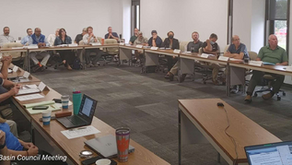Projects Beware: Environmental Regulations Not Aligned with New Federal Funding
- JD Solomon
- Dec 14, 2021
- 2 min read

The recently passed infrastructure bill provides billions of dollars for progressive infrastructure aimed at beneficial reuse, energy efficiency, and projects that offset the impacts of man-made climate change. The trouble with timely implementation now lies in the associated environmental regulations and building codes that were not developed with the same policy and legislative focus as the recent funding approval. To make matters worse for project implementation, most environmental regulations and building codes take years to modify because they are controlled at the state and local levels.
One example of what lies ahead comes from the three decades of effort to implement water reuse – the practice of reclaiming water from a variety of sources, treating it, and reusing it for beneficial purposes, as a water conservation measure. Although advocated by USEPA since the 1980s, running partially treated wastewater back into houses and commercial offices was not anticipated in state water rules or local building codes. "Purple pipe" projects do not incur the same [problems as they ponce did, but their practical acceptance by end-users has been stymied for several more decades.
The beneficial reuse of stormwater is also another example. For two decades, the offsetting use of site stormwater as a source of fire-fighting water or wash water has been endorsed as for environmental conservation and as a cost-savings measure. Once again, state environmental rules and building codes were not developed with this practice in mind. Projects that encouraged to include beneficial reuse of stormwater have largely abandoned the concept at any form of large (and meaningful) scale.
A third example is related to renewable natural gas. USEPA encourages the recovery and beneficial use of biogas as a renewable energy resource, including the production of renewable natural gas (RNG) when feasible, as a means of reducing emissions and providing other environmental benefits. Last week, the North Carolina Environmental Management Commission (EMC) was asked to provide a Declaratory Ruling of a rule interpretation dispute between NCDEQ and the regulated RNG facility. By a 7-5 vote, the EMC sided with the interpretation of the RNG facility in large part because of the literal wording of the rule. All parties, including the RNG facility, agreed that the rule was not written in anticipation of the current nature of RNG facilities. The impact on the project's permits was tens of thousands of dollars and a year in delays.
These three examples show some of the challenges ahead for projects using the new infrastructure funding for beneficial reuse, energy efficiency, and projects that offset the impacts of man-made climate change. While the policies may be good ones and the funding is now there, the supporting state rules and local building codes will create budget and schedule issues. Projects beware!




コメント